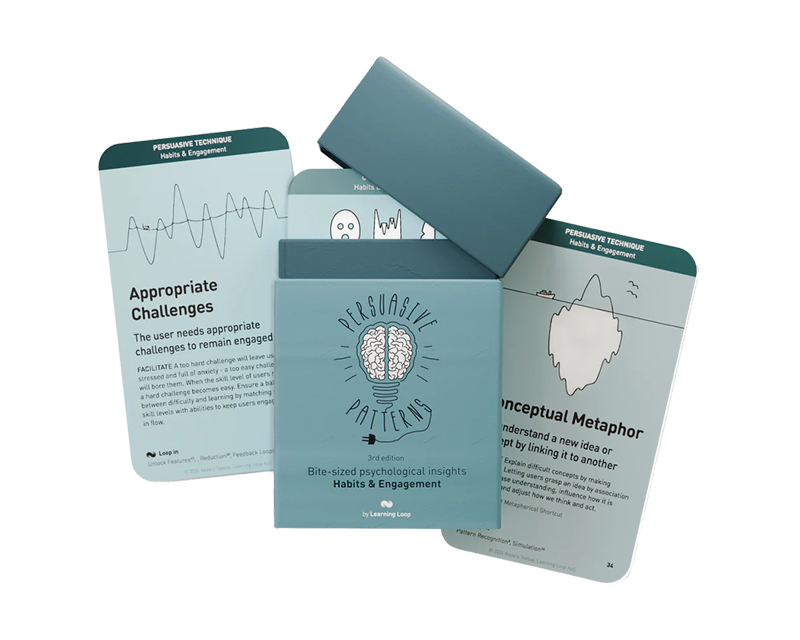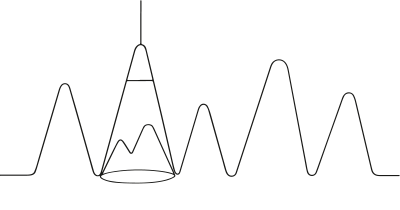
Shaping is a persuasive technique that guides users towards a desired behavior by rewarding small, progressive steps.
Consider a parent trying to teach their child to ride a bike. They wouldn’t expect the child to hop on and zoom off flawlessly. Instead, they’d likely start by familiarizing the child with the bike, then progress to balancing with training wheels, rewarding each step with praise or encouragement. As the child demonstrates improvement, the training wheels come off, and eventually, they’re riding independently. This gradual reinforcement of progressive steps exemplifies shaping in action.
Many fitness apps utilize shaping to encourage users to develop healthy habits. Imagine a new user signing up for a fitness app. The app might not bombard them with a grueling workout plan on day one. Instead, it might start with a simple challenge – walk for 15 minutes three times a week. As the user completes these challenges and logs their activity, the app might reward them with badges or positive feedback. Over time, the app can gradually introduce more challenging workouts, building on the user’s established habit and rewarding continued progress. This approach leverages shaping to make fitness goals feel achievable and foster long-term engagement.
The study: The Skinner Box
One of the seminal studies on shaping comes from the field of behavioral psychology, particularly through the work of B.F. Skinner in the mid-20th century. Skinner’s experiments with pigeons and rats demonstrated the effectiveness of shaping by using successive approximations to teach complex behaviors. For example, Skinner was able to teach a pigeon to turn in a full circle by initially reinforcing slight movements in the desired direction and gradually requiring more pronounced movements for reinforcement until the full behavior was achieved. This method, known as “shaping,” showed that complex actions do not need to be taught in one go but can be built up incrementally, making it a fundamental technique in both animal training and human behavioral therapy.
Skinner, B. F. (1953). Science and human behavior. New York, NY: Macmillan.
Shaping is commonly used in both psychological therapy and behavior modification programs. It breaks down a complex behavior into smaller, manageable components, each of which is taught and reinforced until the final desired behavior is achieved. This method is highly effective in teaching new behaviors or modifying existing ones by providing immediate rewards or feedback for incremental progress, making it less daunting for the individual to adopt a new habit or skill.
Shaping breaks down a complex goal into smaller, achievable steps, allowing individuals to gradually develop competence and confidence. Each successive step builds on the previous one, with positive reinforcement provided at each stage to encourage progression. This method is rooted in the principles of behaviorism and is particularly effective in settings where new, complex behaviors or skills are being introduced.
The psychological principle underlying the shaping technique is based on the concept of operant conditioning, a theory formulated by B.F. Skinner. Operant conditioning revolves around the idea that behaviors can be molded (shaped) by their consequences. This method involves reinforcing behaviors that are progressively closer approximations of the target behavior, which is the ultimate goal. Each step that slightly resembles the desired outcome is reinforced, encouraging the subject to continue moving closer to the final behavior.
The effectiveness of shaping is influenced by several key psychological factors:
- Reinforcement
This is the cornerstone of shaping, where positive reinforcements (rewards) or negative reinforcements (removal of unpleasant stimuli) are used to increase the likelihood of a desired behavior being repeated. The type and timing of reinforcement play critical roles in how quickly and effectively behaviors are shaped. - Successive approximations
Shaping works by rewarding actions that are incrementally closer to the desired behavior. This technique leverages the natural process of trial and error, allowing the subject to learn which actions produce positive outcomes and which do not. - Behavioral shaping
Over time, as users consistently receive positive reinforcement for completing progressively more complex steps, their behavior is gradually shaped towards the desired outcome. This shaping process strengthens the association between the desired behavior and the positive reinforcement, making it more likely that users will continue to perform the behavior even when the rewards become less frequent.
The subject’s motivation significantly affects the shaping process. Intrinsic motivation can enhance engagement and the speed at which the behavior is adopted, while external motivators, such as rewards or approval, can also play pivotal roles.
Shaping not only involves simple behavioral changes but also engages cognitive processes such as memory and attention. Subjects learn to associate specific behaviors with certain outcomes, reinforcing the memory of what behaviors are successful.
Effective shaping requires continuous feedback. This allows the subject to adjust their actions based on previous successes or failures, refining their approach towards the target behavior.
Designing products through Shaping
When introducing a new product, especially one that is feature-rich and complex, it can be helpful to implement a gradual introduction of features. For instance, to initially expose users to basic functionalities before progressing to more advanced features. This approach of layering information helps prevent users from feeling overwhelmed and ensures a smoother transition through the learning curve. To effectively reinforce progress, each stage of feature introduction can be accompanied by tutorials or incentives, such as unlocking new capabilities or content. These rewards serve as positive reinforcements for users as they achieve mastery over each new stage, encouraging continued engagement and exploration.
Clear, immediate feedback lets users know when they are moving in the right direction, which reinforces their actions and motivates further progress. Simple visual cues, such as progress bars or checkmarks, can be highly effective. These indicators not only acknowledge the completion of each step toward the final goal but also help cement the learning process, making the experience more rewarding.
The user onboarding process is an ideal phase to apply shaping principles. Designing onboarding to guide users step-by-step through the product’s features can dramatically enhance user comprehension and capability. Starting with essential functions and gradually revealing more complex features allows users to build confidence as their proficiency increases. This stage-by-stage revelation can be augmented with interactive walkthroughs, offering rewards like tips or customization options after each completed step, thus maintaining a high level of user interest and engagement.
Goal setting is another area where shaping can help. By encouraging users to set goals and establish milestones within the product, designers can create mini-goals that act as stepping stones toward the larger objective. Each milestone achieved should be met with some form of reward or recognition, reinforcing the desired behavior and spurring the user to continue. This not only keeps users motivated but also leverages the shaping principle to enhance their proficiency with the product.
To keep users engaged without overwhelming them, consider implementing adaptive and Appropriate Challenges that adjust in difficulty based on the user’s proficiency level. Starting with easier tasks ensures initial success and positive reinforcement, which is critical for maintaining motivation. As users’ skills develop, the challenges gradually become more difficult, encouraging continuous skill development and sustained engagement. This approach helps maintain an optimal challenge level, which is key to keeping users engaged and committed to progressing through the product.
To operationalize these strategies effectively, you can follow these exercises step-by-step guide:
- Define the target behavior
Clearly identify the specific behavior you want to encourage. Is it completing a task, signing up for a premium service, or consistently using a particular feature? A well-defined target behavior allows you to tailor the shaping process for maximum impact. - Break down the target behavior
Complex tasks can feel overwhelming. Break down the target behavior into a series of smaller, achievable steps. Imagine a staircase – each step represents a mini-goal that users need to complete to reach the desired outcome. This is your user journey. - Identify reinforcement opportunities
For each step in the user journey, determine what kind of positive reinforcement will motivate users to keep moving forward. This could be anything from a simple progress bar to personalized feedback or badge systems. The key is to ensure the reinforcement aligns with the specific step and feels meaningful to the user. - Make progress visible
People are motivated by a sense of accomplishment. Brainstorm ways to visualize the user’s progress throughout the journey. Progress bars, checklists, or milestone markers can provide a clear picture of how far users have come and how much closer they are to achieving their final goal. - Celebrate milestones
Identify ways to acknowledge user progress along the way. Celebrate the completion of key steps with positive reinforcement, This could involve short congratulatory messages, badges, or unlocking new features. Recognition keeps users engaged and motivates them to continue climbing the staircase. - Match rewards with progress
Consider finding ways to tailor the rewards to the evolving needs and preferences of the user. This personal touch can further enhance user engagement and reinforce the value of continuing on the desired path. - Match difficulty with progress
As users complete steps and receive reinforcement, you will want to find ways to gradually increase the difficulty of subsequent steps. This keeps them challenged and prevents them from becoming complacent. However, ensure the difficulty curve remains manageable to avoid overwhelming users.
Ethical recommendations
Shaping’s power lies in its ability to guide behavior. However, this power necessitates ethical considerations. Unethical use of shaping can manipulate users and exploit vulnerabilities.
The primary risk lies in manipulating users into behaviors that benefit the business at the expense of the user’s own interests or well-being. For instance, shaping can be used to lead users progressively towards subscriptions or purchases that they neither need nor can afford. Additionally, the misuse of shaping in settings such as workplaces or educational platforms could lead to excessive pressure, where the incremental goals set forth become unrealistic or overly demanding, potentially leading to stress and burnout.
- Overly ambitious goals or rapid increases in difficulty can overwhelm users and discourage them from continuing.
- Meaningless or irrelevant rewards that will fail to motivate users and can damage trust in the overall experience.
- Preying on users’ insecurities or anxieties to pressure them into desired behaviors is not only manipulative but can also backfire, fostering resentment and brand aversion.
To ensure the ethical use of shaping, several best practices should be adhered to:
- Focus on progress, not perfection
Celebrate small steps and acknowledge user effort. The journey towards a goal is just as important as the final destination. - Set realistic and fair milestones
The steps or milestones set within the shaping process should be achievable and fair. Setting overly difficult or numerous steps could lead to frustration or disengagement, so it’s important to calibrate challenges to the user’s ability and context. - Respect user autonomy
Avoid manipulative tactics. Shaping should guide users, not coerce them. Provide clear choices and allow users to make informed decisions. - User value over value extraction
Ensure the target behavior ultimately benefits the user, not just the product or service. Shaping should be a tool for user empowerment, not exploitation. - Consent
Users should have the ability to opt in or out of the shaping process. Providing users with control over their participation respects their autonomy and consent. - Provide support and feedback
Offer adequate support and constructive feedback throughout the shaping process. Support can be in the form of help resources, direct assistance, or even encouragement, which can help users overcome challenges without feeling overwhelmed.
Your goal as a business should be to guide users towards positive outcomes, not manipulate them for short-term gains.
Real life Shaping examples
Strava
Strava, a social network site for athletes, shapes user behavior by starting them with basic activity tracking features. As users become more engaged, Strava encourages them to join challenges, participate in community events, and use performance analysis tools, which deepens their engagement and commitment to their fitness goals.
Rosetta Stone
Rosetta Stone employs shaping in language learning by starting with simple vocabulary and basic sentences. As learners progress, the software introduces more complex language structures and conversational skills, effectively shaping the learner’s proficiency in a new language through structured levels and interactive activities.
Adobe Photoshop
Adobe Photoshop offers tiered levels of tool complexity and tutorials guiding users from basic photo editing techniques to advanced graphic design skills. New users can start with simple tasks like cropping and adjusting brightness, and as they become more skilled, they are gradually introduced to layers, masks, and digital compositing, thus shaping their proficiency in digital arts progressively.
Trigger Questions
- What specific user behavior are we trying to encourage?
- Can we break down the target behavior into a series of achievable steps?
- What type of positive reinforcement would be most meaningful to users at each step?
- How can we effectively visualize user progress throughout the journey?
- At what points can we celebrate milestones and acknowledge user achievements?
- How effectively are we providing feedback that is immediate and meaningful?
- How can we tailor rewards to user preferences as they progress through the steps?
- Are our incremental steps appropriately paced to not overwhelm or underwhelm our users?
- Are our shaping strategies flexible enough to accommodate a range of user preferences and learning speeds?
Pairings
Shaping + Feedback Loops
Integrating shaping with feedback loops can significantly amplify learning and engagement. For example, as users progress through small, incremental tasks (shaping), they receive immediate and continuous feedback on their actions (feedback loops). This combination not only helps reinforce each step but also adjusts the difficulty and assistance based on user performance.

Successively reinforce approximations to a target behavior
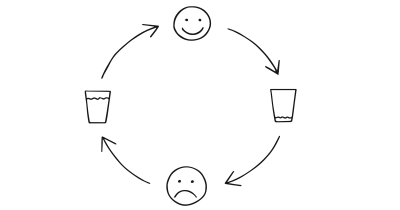
We are influenced by information that provides clarity on our actions
Shaping + Commitment & Consistency
By getting users to agree to small tasks initially and gradually increasing their complexity, users develop a pattern of consistent behavior that aligns with their initial commitment, effectively deepening their engagement and loyalty to a product or process.

Successively reinforce approximations to a target behavior
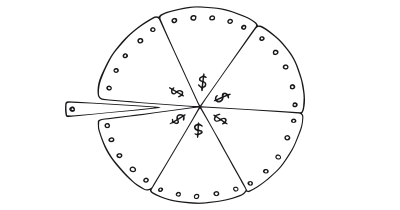
We want to appear consistent with our stated beliefs and prior actions
Shaping + Goal-Gradient Effect
The goal-gradient effect states that the closer we get to a goal, the more effort we exert. When combined with shaping, where tasks are broken down into manageable steps, the visibility of approaching the final goal can motivate users to complete tasks more quickly and efficiently.

Successively reinforce approximations to a target behavior
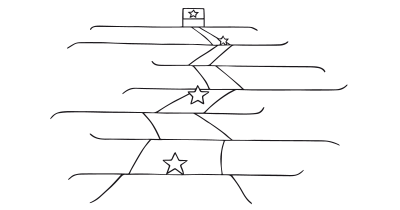
Our motivation increases as we move closer to a goal
Shaping + Rewards
Pairing shaping with rewards enhances motivation. By offering tangible rewards as users complete each shaped task, you directly reinforce their actions and encourage continued progress towards larger goals. This can be particularly effective in gamified environments.

Successively reinforce approximations to a target behavior

Use rewards to encourage continuation of wanted behavior
Shaping + Loss Aversion
Applying loss aversion alongside shaping can be a strong motivator. For instance, in a digital learning platform, users might start with a certain number of points or a status that they will lose unless they complete shaped tasks regularly. This fear of losing something can spur users to adhere to the shaped pathway more diligently.

Successively reinforce approximations to a target behavior
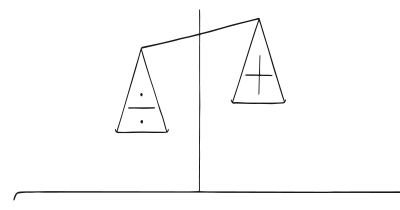
Our fear of losing motivates us more than the prospect of gaining
Shaping + Curiosity Effect
Combining shaping with the curiosity effect can effectively maintain user engagement. By progressively revealing information or features that pique users’ interest at each step, you encourage continued exploration and interaction. For example, a mobile app could unlock intriguing content or features as users master each level or complete tasks, continuously renewing their curiosity and motivation to progress.

Successively reinforce approximations to a target behavior
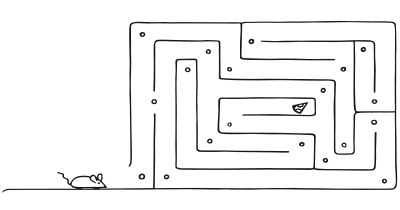
We crave more when teased with a small bit of interesting information
Shaping + Anchoring Bias
Using anchoring bias with shaping can set users’ expectations from the outset. By establishing a high anchor point, such as the optimal performance level or ultimate benefit at the beginning of the user journey, users’ subsequent actions and perceptions are influenced towards achieving that anchor. This technique can effectively guide the incremental steps in shaping, as users aim to reach or exceed the anchor through successive approximations.

Successively reinforce approximations to a target behavior
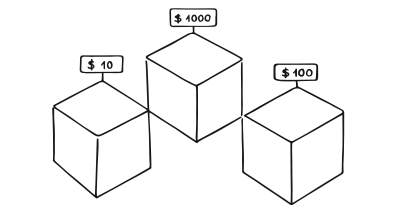
We tend to rely too heavily on the first information presented
Shaping + Priming Effect
Priming users with specific cues or contexts that relate to the desired behavior can enhance the effectiveness of shaping. For instance, if you are shaping financial saving habits, exposing users to visual or textual content that emphasizes financial security and responsibility can prime them for actions aligned with saving. Each step of the shaping process can reinforce these concepts, building a stronger inclination towards saving.

Successively reinforce approximations to a target behavior

Decisions are unconsciously shaped by what we have recently experienced
Shaping + Framing Effect
Utilizing the framing effect to present each step in shaping can influence how users perceive their journey. By framing each small step as a significant achievement towards a larger goal, users are more likely to view their progression positively, increasing satisfaction and adherence to the process. For example, a fitness app can frame a 5-minute increase in workout time as a major step towards peak health, rather than just a minor change.

Successively reinforce approximations to a target behavior

The way a fact is presented greatly alters our judgment and decisions
Shaping + Social Proof
Integrating social proof with shaping reinforces the user’s behavior through community validation. As users progress through each step, showing them that others are also achieving similar milestones can motivate them to continue. In educational platforms, for example, showing stats or notifications of how many other users have successfully completed a lesson or a level can encourage individuals to keep going, leveraging the social proof to reinforce the shaping process.�a�aDon’t get caught up in the mechanics of pattern application. Always focus on how these patterns, working together, can create a user experience that is not only persuasive but also genuinely valuable. The most effective approach will vary depending on your specific product and target audience. Consider user needs and preferences when crafting the combination of persuasive patterns.

Successively reinforce approximations to a target behavior

We assume the actions of others in new or unfamiliar situations
A brainstorming tool packed with tactics from psychology that will help you build lasting habits, facilitate behavioral commitment, build lasting habits, and understand the human mind. It is presented in a manner easily referenced and used as a brainstorming tool.
Get your deck!- Science and human behavior by Skinner
- A day of great illumination: B by Peterson
- Shaping (psychology) at Wikipedia (en)
- Operant conditioning at Wikipedia (en)
- What is shaping a behavior? by Praveen Shrestha at Psychestudy
- Skinner, B. F. (1953). Science and human behavior. New York, NY: Macmillan.
- Skinner, B. F. (1938). The behavior of organisms: An experimental analysis. Appleton-Century.Ferster, C. B., & Skinner, B. F. (1957). Schedules of reinforcement. New York, NY: Appleton-Century-Crofts.
- Pryor, K. (1982). Don't shoot the dog!: The new art of teaching and training. New York, NY: Bantam Books.
- Epstein, R., Kirshnit, C. E., Lanza, R. P., & Rubin, L. C. (1984). 'Insight' in the pigeon: Antecedents and determinants of an intelligent performance. Nature, 308(5954), 61-62.
- Fogg, B. J. (2019). Tiny habits: The small changes that lead to big results. Houghton Mifflin Harcourt.
- Staddon, J. E. R. (2009). Behaviorism and mental processes. Psychology Press.
- Seligman, M. E. P., & Csikszentmihalyi, M. (2000). Positive psychology: An introduction. American Psychologist, 55(1), 5-14.
- Peterson, G.B. (2004) A day of great illumination: B.F. Skinner’s discovery of shaping. Journal of the Experimental Analysis of Behavior, 82: 317–28.
